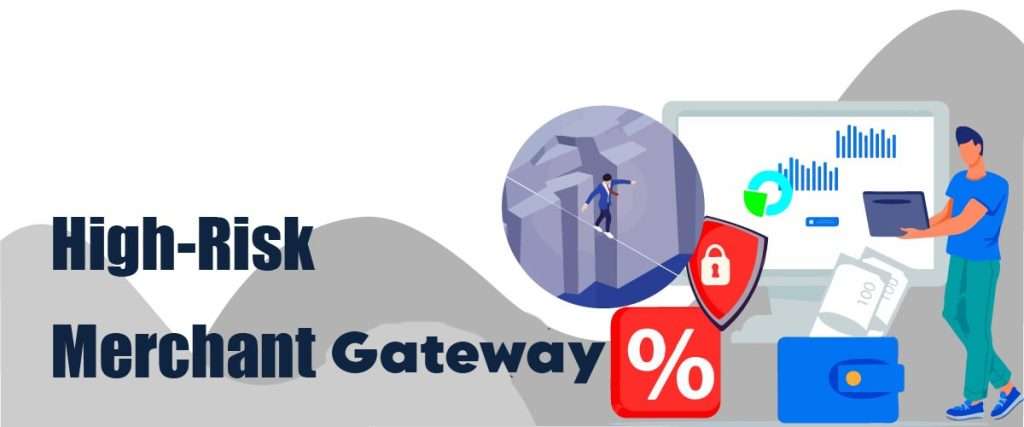AUTHOR : ADINA XAVIER
DATE : 20/09/2023
Introduction

The payment gateway industry[1] is evolving rapidly, driven by advances in technology, regulatory changes, and consumer preferences. As businesses strive to provide seamless online payment experiences, understanding the latest trends is crucial for success. Among the various payment solutions, a High Risk Merchant Gateway has emerged as a specialized service catering to industries with high chargeback rates or fraud risks.
The Rise of Digital Wallets and Contactless Payments
The Shift Towards Cashless Transactions
Digital wallets, such as Apple Pay, Google Pay, and Samsung Pay, are gaining momentum as consumers embrace the convenience of making payments via smartphones and other mobile devices. With contactless payments becoming more popular, merchants are adopting these technologies to cater to tech-savvy customers. For high-risk industries[2], having a secure payment gateway that supports digital wallets is essential to provide a frictionless payment experience while mitigating fraud risks.
Why Digital Wallets Matter for High-Risk Merchants
A High Risk Merchant Gateway can offer enhanced protection for merchants operating in sectors like gaming, adult entertainment, or online gambling, which often experience higher fraud rates. These gateways can integrate digital wallet support with additional layers of security, making transactions faster and more secure.
AI and Machine Learning for Fraud Prevention
AI-Powered Fraud Detection
Fraud prevention has always been a top concern for payment gateways, particularly for high-risk merchants. In 2024, artificial intelligence (AI) and machine learning (ML) are being leveraged to enhance fraud detection systems. AI algorithms can analyze transaction patterns, detect anomalies, and prevent fraudulent transactions in real-time.
The Role of AI in High-Risk Merchant Gateways
A High Risk Merchant Gateway[3] benefits from AI’s ability to analyze vast amounts of data quickly and accurately. By using machine learning to predict fraudulent activity, these gateways can protect both merchants and customers from potential losses. This technology is crucial for high-risk industries where fraud attempts are more frequent.
Tokenization and Encryption for Enhanced Security
How Tokenization Works
Tokenization is a security technique that replaces sensitive payment information, such as credit card details, with a unique identifier or token. This method ensures that sensitive data is never exposed during the payment process, significantly reducing the risk of data breaches.
Tokenization in High-Risk Merchant Gateways
For merchants in high-risk sectors, ensuring the security of payment information is paramount. A High Risk Merchant Gateway[4] equipped with tokenization and encryption features can protect sensitive customer data while maintaining smooth payment processes. These security features are especially important for industries like travel and online retail, where large transaction volumes are common.
Cryptocurrency and Blockchain Integration
The Role of Cryptocurrency in Payments

Cryptocurrency adoption is on the rise, with many merchants now accepting digital currencies like Bitcoin, Ethereum, and others. The benefits of cryptocurrency payments, including lower transaction fees and faster processing times, make them an attractive option for businesses. Furthermore, blockchain technology offers a high level of transparency and security for transactions[5].
High-Risk Merchants and Cryptocurrency Payments
A High Risk Merchant Gateway can help facilitate cryptocurrency payments by providing secure and seamless integration with blockchain networks. As many high-risk merchants are involved in international transactions, cryptocurrencies offer a way to bypass traditional banking systems and reduce the risk of chargebacks or fraud.
Regulatory Compliance and PSD2
Understanding PSD2 Regulations
The European Union’s Revised Payment Services Directive (PSD2) aims to improve payment security and foster innovation within the financial services sector. PSD2 requires strong customer authentication (SCA) for online payments, which is a major shift in how payment processing is handled. This regulation affects not only European merchants but also global businesses that serve EU customers.
How PSD2 Impacts High-Risk Merchant Gateways
For high-risk merchants, complying with PSD2 is essential to avoid penalties and ensure payment security. A High Risk Merchant Gateway can help these businesses comply by implementing the necessary security measures, such as multi-factor authentication, to meet the regulatory requirements.
Real-Time Payments and Instant Transfers
The Push for Faster Payments
Consumers and businesses are increasingly expecting faster payment processing. Real-time payments and instant bank transfers are gaining popularity, especially for transactions that require immediate confirmation, such as in the gaming or e-commerce sectors.
High-Risk Merchant Gateways and Real-Time Payments
A High Risk Merchant Gateway equipped with real-time payment capabilities allows businesses to process transactions instantly, reducing the risk of chargebacks and fraud. Instant payments are particularly beneficial for industries like online gaming, where quick transactions can enhance customer satisfaction and loyalty.
Subscription-Based Payment Models
The Growth of Subscription Services
Subscription-based business models, including SaaS, content streaming, and digital media subscriptions, are growing at a rapid pace. These recurring payment models require payment gateways that can handle subscription management, recurring billing, and complex payment cycles.
Payment Gateways for High-Risk Subscription Services
For high-risk subscription services, such as adult content or online gambling, a High Risk Merchant Gateway offers tailored solutions to manage recurring payments while protecting against chargebacks and fraud. These gateways provide recurring billing features, fraud detection, and automated payment management systems.
Enhanced Mobile Payment Solutions

The Increasing Use of Smartphones for Payments
Mobile payments are becoming the preferred method for consumers to complete transactions, especially in e-commerce and retail. This shift toward mobile payments has led to an increase in demand for mobile-optimized payment gateways.
Mobile Payments and High-Risk Merchant Gateways
For high-risk merchants operating in mobile-heavy industries, a High Risk Merchant Gateway is essential to ensure mobile payments are processed securely and efficiently. These gateways offer mobile-friendly features and advanced fraud protection, making them ideal for industries with high transaction volumes and fraud risks.
Conclusion
The payment gateway industry continues to evolve, with new trends and technologies shaping the way transactions are processed. For high-risk merchants, choosing the right High Risk Merchant Gateway is crucial to ensure secure, efficient, and compliant payment solutions. As digital wallets, AI-powered fraud detection, and real-time payments become more prevalent, businesses in high-risk sectors can stay ahead of the curve by adopting advanced payment technologies tailored to their needs.
FAQs
1. What is a High Risk Merchant Gateway?
A High Risk Merchant Gateway is a specialized payment processing solution designed for businesses operating in industries with higher fraud risks or chargeback rates, such as online gambling, adult services, or travel.
2. How does a High Risk Merchant Gateway protect my business?
A High Risk Merchant Gateway protects businesses by implementing advanced fraud detection technologies, such as AI, tokenization, encryption, and real-time transaction monitoring.
3. Why do high-risk industries need a specialized payment gateway?
High-risk industries often face higher incidences of fraud, chargebacks, and financial instability. A specialized High Risk Merchant Gateway is tailored to address these unique challenges by providing additional fraud protection, transaction monitoring, and compliance with industry regulations.
4. Can I use a standard payment gateway for a high-risk business?
While it’s possible to use a standard payment gateway for high-risk businesses, it is not recommended. Standard gateways often lack the advanced fraud protection and compliance features required by high-risk merchants.
5. What are the benefits of using a High Risk Merchant Gateway?
The benefits of using a High Risk Merchant Gateway include enhanced fraud prevention, better chargeback management, and access to specialized payment features such as recurring billing, mobile payments, and cryptocurrency integration.





